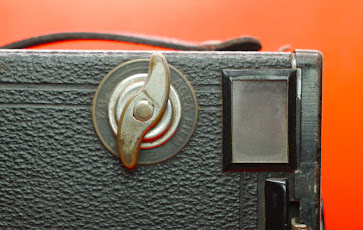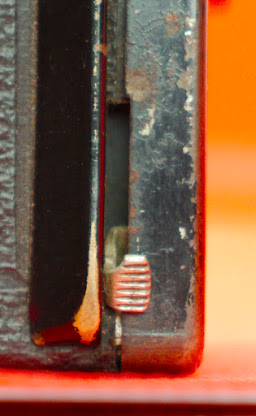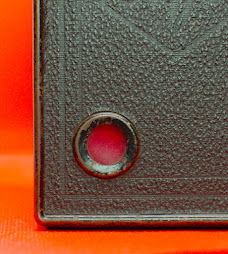Good news! My Displate store is online with 10 posters and more on the way.
So for a metal print of my drawings on Displate: https://displate.com/artist/BFennSW?art=66e809bf952d9
Please note that I have closed my Picfair store, but you can now buy my pictures on my Patreon: patreon.com/OnlineCurator
Thank you for the support. Anyway, back to your regularly scheduled programming:
I
already went through Kodak’s history in my Kodak
200 plus color film and the history of the Instamatic camera series can be
read about in my other Instamatic posts: Instamatic
pocket 10, Instamatic
104 and the Instamatic
50 and X-15F.
So,
with that in mind, I will be jumping straight into the camera at hand.
There
isn’t much history attached to this camera that makes it stand out like the Beau
Brownie, from Kodak’s Brownie series. The camera was just part of the
Instamatic range that sought to make photography easier by simplifying the
Instamatic camera even further. Even the name of 33 suggests that, with
Camera-wiki stating: “…model numbers in this line ended in ‘33’; the higher the
number, the more features were offered.”
But
none the less, this camera is still pretty interesting and a strong piece of
evidence that this camera with the rest of the Instamatic cameras upholds
Kodak’s goal to make photography as easy and accessible to everyone.
With
that out of the way let’s have a look at the camera itself. The Instamatic 33
came out in 1968-1973 (Peggy 2019) and is mostly constructed from plastic. Its
size is 11 x 6 x 13cm (Museums Victoria Collections) and has a weight of 184g
(velharias71 2024).
This
camera also has two other variations, The Instamatic 133 and 133X. Both are the
same as the 33, but the 133 was adapted to take flashcubes (like the Instamatic
104) and the 133X was adapted to take magicubes (see Instamatic
pocket 10 post), this according to Photo Thinking (2019).
 |
| Kodak Instamatic 133. Image Source: https://i.ebayimg.com/images/g/Z9gAAOSwqGRlSO98/s-l1200.jpg |
 |
| Kodak Instamatic 133X. Image Source: https://foticoscollection.com/storage/media/11670/conversions/UWnCa_orig-zoom.jpg |
The
camera is as simple as it gets. So, let us have a closer look.
Starting
with the front-
The
lens-
This
is a fixed focus lens with a focal length of 43mm and a fixed f/stop of 11. The
lens is also plastic (Filmphotography.eu 2025).
The
lens is similar to the 104, 50 and X-15F and this means we can assume that the
lens is also a Meniscus lens plastic lens (see Pocket
10 for more information).
Around the lens is the shutter speed setting. There are two speeds, each represented by a weather symbol, like the 50. As mentioned, this camera has a fixed f/stop, that is why this setting can’t be labelled as the exposure setting.
Then
on the far right corner, is the viewfinder. It is larger and much more
comfortable then the 104 or 50. But unlike the 104/50, the finder is not
aligned with the lens!
Then
a bit to the left is the L-shaped shutter button/release.
On
top-
Is
the shutter button again. The shutter is most likely also a leaf shutter,
similar to the 104.
Then behind that is the film advance wheel. Unlike the other Instamatic cameras on this blog/museum, this camera doesn’t have a lever. Instead the user must wind the wheel anti-clockwise (similar to the Sounex Y-9000 and the Solar DX-3).
But this instamatic isn’t the first camera with this feature. That most likely goes to the 150, which is like the 100. And like the 100, which was improved upon by the 104, the 150 was adapted to take flashcubes with the 154.
 |
| Kodak Instamatic 150. Image Source: https://primary.jwwb.nl/public/n/r/a/temp-xmmqfrlttbhrujcdemek/gqtkgn/150.jpg?enable-io=true&enable=upscale&crop=1024%2C768%2Cx0%2Cy35%2Csafe&width=284&height=213 |
.jpeg) |
| Kodak Instamatic 150. Image Source: https://i.ebayimg.com/images/g/TiEAAOSwRSddathb/s-l1200.jpg |
The
film advance wheel also cocks the camera, because like the X-15F,
the film advance is connected to the cocking mechanism. When the film is
advanced a hook pops out and holds the film in place by hooking into one of the
film’s sprocket holes. Which is a great why of preventing any double exposures.
Then
next to the film advance is the twin contact hot-shoe, which uses a Flash
holder or Instamatic Flash gun, just like the Instamatic
50.
 |
| Kodak Instamatic 33 with Flash holder. Image Source: https://collections.museumsvictoria.com.au/items/407838 |
The
right side-
Is
where the strap goes.
Left
side-
On
the bottom corner, like the X-15F, is the lever that unlocks the film
compartment cover.
Then
the back-
Is
the film compartment cover and on this cover is the film counter window.
Above
that in the left-hand corner is the viewfinder.
Then
there is the film compartment. Like the Instamatic
104 and the Instamatic
50 and X-15F, this camera uses 126 film.
And that seems to be it. Nothing really remarkable about this camera. I do think that like the other Instamatic cameras, this camera can be a good starting point for anyone interested in venturing into the world of film photography (that is if you can find a 126-film cartage, of course).
But
in my opinion this camera is a bit of a downgraded. By this I mean that it
looks bland compared to its predecessors, which had an eye catching and style
that reflected the decade it was manufactured. Then there is the film advance
wheel, which looks interesting, but isn’t as efficient as the lever from the
other three Instamatics.
But
still, this camera embodies Kodak goal, for: “It is very robust, and I also
like the easy insertion and removal of the film cassette…” (Agrimony 2008). What
do you think? Do you prefer this style and look? Do you prefer the wheel over
the lever? Let me know in the comments.
And as always, thank you for making it to the end and I hope you enjoyed this as much as I did researching it.
If you want to help this site out, please consider joining my Patreon: patreon.com/OnlineCurator
Please see the Please help this site post on this blog, for more information.
Or if you want to help in another way, please visit my Displate Store. Thank you for the support.
List of sources:
Agrimony. 2008. A
Review of the Kodak Instamatic 33. https://www.lomography.com/magazine/5442-a-review-of-the-kodak-instamatic-33
Camera-wiki. Kodak
Instamatic 133 Camera. https://camera-wiki.org/wiki/Kodak_Instamatic_133_Camera#:~:text=These%20cameras%20were%20made%20by%20Kodak's%20German,separate%20flashgun%20instead%20of%20a%20flashcube%20socket.
Filmphotography.eu.
2025. Kodak Instamatic 33. https://filmphotography.eu/en/kodak-instamatic-33/
Museums Victoria
Collections. Camera - Kodak, Instamatic, 33, circa 1960s. https://collections.museumsvictoria.com.au/items/407838
Peggy. 2019. Kodak
Instamatic 33. https://cameragocamera.com/2019/12/08/kodak-instamatic-33/
Photo Thinking. 2019.
Kodak Instamatic 133 – Not really instant or automatic. https://photothinking.com/2019-02-23-kodak-instamatic-133/#:~:text=There%20are%20a%20couple%20of,133%2DX%20which%20uses%20Magicubes.
Velharias. 2024. Kodak Instamatic 33 Camera. https://www.ebay.com/itm/166798278631#:~:text=About%20this%20item,a%20few%20marks%20barely%20visible.
























.jpeg)
.jpeg)
.png)

.jpeg)

































